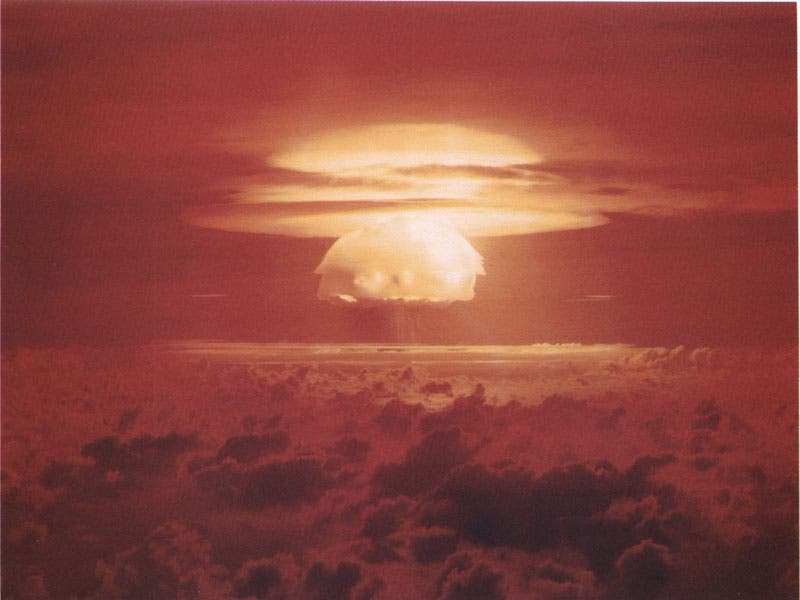Shipping cyanobacteria to Mars or dumping greenhouse gas into its thin atmosphere might be too slow. Elon Musk is in a hurry, considering he wants to see an 80,000 people colony on Mars during his lifetime. A more drastic, quick fix way of terraforming Mars might be nuking its poles, Musk suggested on The Late Show with Stephen Colbert, this Wednesday. “You’re a supervillain!” Colbert said. “That’s what a supervillain does!”

Well, he’s still a hero in my book. After all, it’s not like Martians would mind it. If there’s any life beneath the surface of the Martian soil, exploration efforts shouldn’t be hampered. Rovers or manned colonies will be on the equator and should not be affected by the blast at poles. The reasoning is that there’s a lot of CO2, methane and other greenhouse gases trapped in the ice, just like here on Earth. Melting that ice via a thermonuclear blast will release the CO2 and warm up the planet.
There’s one problem with this plan, and other Martian global warming ideas (deploying aerosols, making cyanobacteria lakes to generate oxygen etc.): Mars’ atmosphere is very thin, about 1% as thick as the Earth’s and solar winds are constantly stripping it even further. Yes, warming the planet is essential if we want to turn Mars into an Earth-like planet, but it’s far from enough. We’d have to re-activate its magnetic fields, as well. As reported by ZME Science previously in a feature article on terraformation, there are other concerns as well.
Scientists would still have to find a way to address the myriad of other problems like: no magnetic field to shield from radiation and sputtering of the atmosphere; no plate tectonics to recycle carbon and water and rebuild eroded land; No large moon to stabilize the axial tilt and provide tides; much more elliptical orbit, which means much more erratic climate; much higher rate of impacts due to proximity of Jupiter and the asteroid belt; gravity only .38 that of Earth; No mountain chains to break up atmospheric currents and release precipitation; surface covered in toxic perchlorates and asymmetry between hemispheres means all land on one side and all ocean on the other.
Re-activating Mars’ magnetic field is extremely challenging, though. The planet is geologically dead and its core solidified a long time ago. A solution might be deploying a network of artificial satellites in orbit around Mars to generate and create an artificial magnetic field, but I have no idea if this is really possible at a planetary scale. The other solution is drilling thousands of miles to the Marian core, and … nuke it! The radioactive material produced would stay in the core and help a more long-term heating similar to that in Earth’s core. Any of these ideas look centuries away though. Until then, someone might think of something a lot better. In the meantime, it’s important not to ruin this planet.


